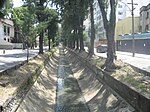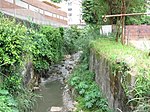Caju Cemetery

The São Francisco Xavier Cemetery is the largest of the many necropolises that make up the group popularly known as the Caju Cemetery, located in the Caju neighborhood of Rio de Janeiro's North Zone. It is the largest cemetery in the state of Rio de Janeiro, covering 441,000 m², and one of the largest in Brazil. The other cemeteries that make up the group of necropolises are the Cemetery of the Third Order of Carmel, the Cemetery of the Venerable Third Order of St. Francis of Penance and the Jewish Communal Cemetery of Caju. It was officially founded on 18 October 1851, in the same place where a slave cemetery had existed since 1839, and has been administered by the Concessionária Reviver since 2015, after more than 150 years of administration by the Santa Casa de Misericórdia [Holy House of Mercy].
Excerpt from the Wikipedia article Caju Cemetery (License: CC BY-SA 3.0, Authors, Images).Caju Cemetery
Rio de Janeiro Caju
Geographical coordinates (GPS) Address Nearby Places Show on map
Geographical coordinates (GPS)
| Latitude | Longitude |
|---|---|
| N -22.883 ° | E -43.222 ° |
Address
20930-450 Rio de Janeiro, Caju
Rio de Janeiro, Brazil
Open on Google Maps








